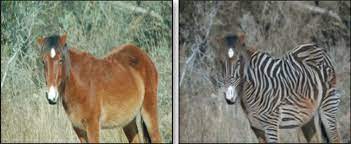Rise of image generation methods in AI – By Aditya Abeysinghe

 Image-to-image translation
Image-to-image translation
Image-to-image translation is the method of transforming an image from one domain to another domain. Image-to-image translation is usually done using deep learning models such as generative adversarial networks. Models used for this method are trained with image pairs, i.e. the input and the output image. Some complex models may even use more advanced methods. Image translation is used in several applications such as for converting color model of an image such as between RGB (Red, Green, Blue) and other color schemes, for converting from one form to other forms such as an image of a summer background to an image of a winter background etc.
Image creation using text
Text-to-image generation is another method that is used for creating an image. In this method, a diffusion Artificial Intelligence (AI) model translates text to images. The model used to generate images is trained using a predefined dataset. Therefore, a text input is mapped to an image using this model. However, a one-to-one generation is often not possible as large sentences of text may need multiple images to be used to create an image which suits the input.
Image creation from image processing
Image processing is a method to change the texture of images such as color, content and background. This method has been used for some time and AI has been used in tools which are used to process images. AI models are also used to generate new images from images after processing. For example, a user may add graphical art to images and process it using a tool. The changes after processing images can then be joined using a model to create a new image.
Uses of AI in creating images
Several image creation techniques and tools use AI-based models. Tools used for image translation use deep learning or neural network models to translate images. These models may use datasets to build models or may use other techniques to train based on fake data. Image creation based on other formats such as text or voice may use models based on diffusion or character recognition methods to transform text or voice to images. Also, other approaches such as speech or text analysis may be used. Image processing may use face recognition, text recognition, layered processing, and object detection. Therefore, AI models and techniques are the core components of most image creation methods.
Ethical issues of image creation
Image creation is often used for illegal purposes. Fake images are often publicized and real images are modified for the benefit of publicity. Furthermore, image processing is used to deceive public for monetary benefits. Large scale security attacks and theft have been reported by publicizing fake or modified images. Also, biasness of gender, race, and religion have been reported in many processed images. These have caused many extremist issues seen currently.
Biasness of data used to train models used for image creation is also an issue. Many datasets contain biased data which cause errors in training and testing AI models. Also, many models used for image to image translation and text to image generation are often trained using fake data due to unavailability of training data. Biasness and errors in created images are caused due to these issues in datasets and models.
Image courtesy: https://analyticsindiamag.com/







